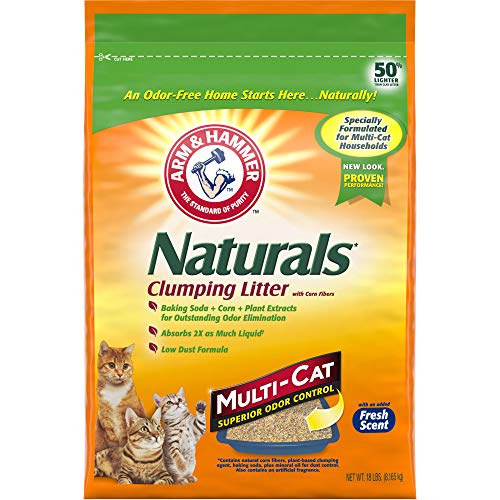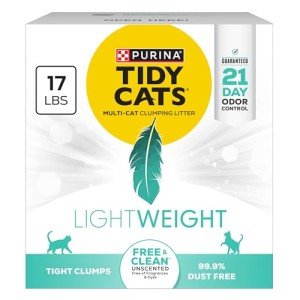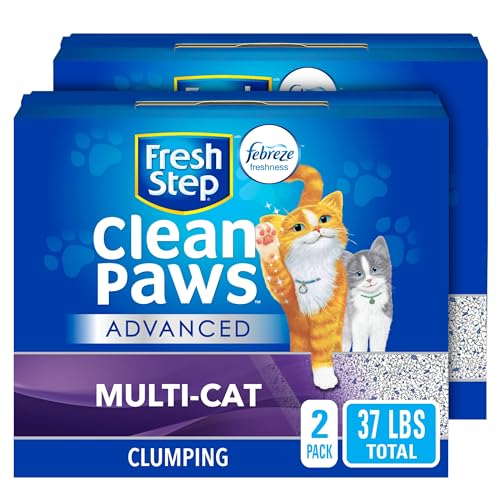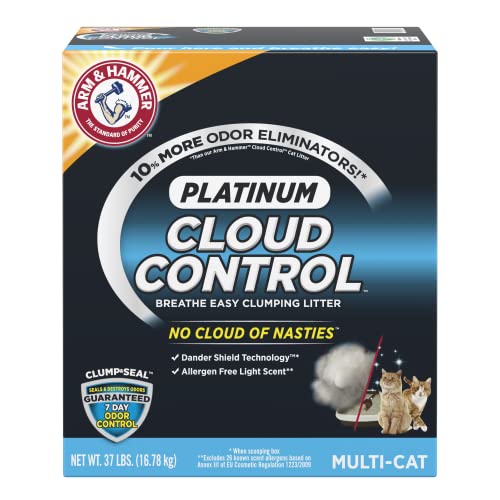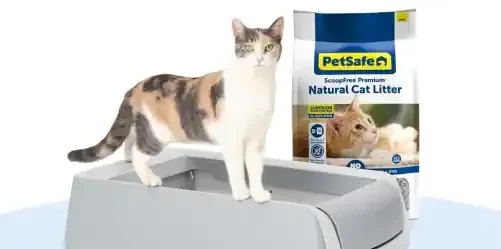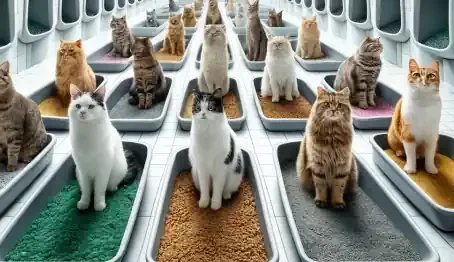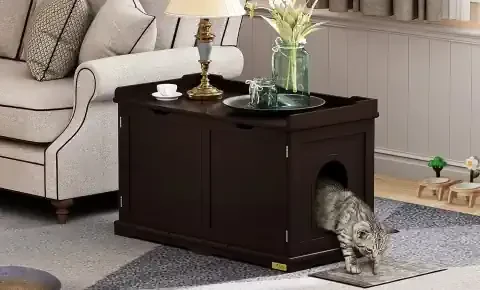Introduction: Understanding Cat Allergies And The Importance Of Hypoallergenic Litter
Cat allergies are a common issue for many cat lovers, often leading to unpleasant symptoms that can hinder the joy of sharing a home with a feline companion. This comprehensive guide delves into the world of hypoallergenic cat litter, designed to alleviate allergies and create a harmonious environment for both you and your furry friend.
What Causes Cat Allergies?
Cat allergies are not a reaction to the cat's fur itself, but rather to a protein called Fel d 1, found in their saliva, urine, and dander (dead skin flakes). When a cat grooms itself, this protein spreads throughout its fur, eventually becoming airborne and triggering allergic reactions in sensitive individuals.
The Impact Of Cat Allergies On Daily Life
Cat allergies can manifest in various ways, ranging from mild to severe. Common symptoms include:
Sneezing
Runny or stuffy nose
Itchy or watery eyes
Coughing
Skin rashes or hives
Wheezing or difficulty breathing
These symptoms can significantly impact your quality of life, making it challenging to enjoy activities with your cat and even causing disruptions to your sleep and overall well-being.
Why Hypoallergenic Cat Litter Is A Game-Changer
Hypoallergenic cat litter is formulated to minimize allergens, offering a solution for those who love cats but struggle with allergies. By reducing dust, controlling odor, and absorbing allergens effectively, these litters can create a healthier environment and help you breathe easier.
What Makes A Cat Litter "Hypoallergenic"?
Not all cat litters are created equal when it comes to allergies. Hypoallergenic litters are typically:
Low-dust or dust-free: Minimizing the amount of airborne particles that can trigger allergies.
Made from natural materials: Avoiding harsh chemicals or artificial fragrances that may irritate sensitive individuals.
Highly absorbent: Trapping allergens and preventing them from spreading.
Odor-controlling: Reducing ammonia and other odors that can contribute to allergy symptoms.
Key Factors To Consider When Choosing Hypoallergenic Litter
Choosing the right hypoallergenic cat litter involves considering several key factors:
Materials: Opt for natural and unscented options to avoid potential irritants.
Dust level: Look for "low-dust" or "dust-free" formulas.
Clumping ability: Clumping litters make cleaning easier and can help contain allergens.
Odor control: Choose a litter with effective odor-absorbing properties.
Cat's preference: Your cat's comfort and willingness to use the litter are crucial.
By understanding the causes of cat allergies, recognizing their impact, and exploring the benefits of hypoallergenic litter, you're well on your way to finding the perfect solution for a happy and healthy coexistence with your feline friend.
Types Of Hypoallergenic Cat Litter Materials
The world of cat litter offers a wide array of materials, each with its own advantages and drawbacks for allergy sufferers. Choosing the right material is crucial to minimize allergens and ensure a comfortable environment for both you and your cat.
Clay Litters: Pros, Cons, And Hypoallergenic Options
Clay litters are a classic choice, known for their affordability and absorbency. However, traditional clay litters can be quite dusty, exacerbating allergies. Look for low-dust or dust-free clay litters that are specifically formulated for sensitive individuals. These options often contain bentonite clay, which clumps effectively for easy cleanup and odor control.
Silica Gel Litters: Benefits And Allergy-Friendly Picks
Silica gel litters are made from tiny silica beads that trap moisture and odor remarkably well. They are virtually dust-free, making them a popular choice for allergy sufferers. Additionally, silica gel litters typically last longer than other types, requiring less frequent changes.
Natural And Biodegradable Litters: Plant-Based Alternatives
For eco-conscious cat owners, natural and biodegradable litters offer a sustainable solution. These litters are often made from materials like wood, corn, wheat, or grass. While they can be effective at controlling odor and minimizing dust, it's important to choose options that are specifically labeled as hypoallergenic to ensure they meet your allergy needs.
Crystal Litters: Sparkling Clean And Low-Dust
Crystal litters, composed of silica gel crystals, are aesthetically pleasing and known for their exceptional odor control. Their low-dust properties make them an excellent choice for allergy sufferers. However, some cats may find the texture of crystal litters less appealing than softer alternatives.
Paper Pellet Litters: Eco-Friendly And Absorbent
Paper pellet litters are made from recycled paper and are known for their absorbency and eco-friendliness. They are generally dust-free and can be a good option for cats with sensitive paws. However, they may not be as effective at odor control as some other types of litter.
Alternative Materials: Exploring Other Hypoallergenic Options
Beyond the common materials mentioned above, there are alternative hypoallergenic litter options emerging on the market. These may include materials like walnut shells, tofu, or even recycled newspaper. Research these options carefully to ensure they meet your specific allergy needs and your cat's preferences.
Top-Rated Hypoallergenic Cat Litter Brands Available on Amazon
With so many choices available, finding the perfect hypoallergenic cat litter can feel overwhelming. This section explores some of the top-rated brands available on Amazon, highlighting their features and benefits to help you make an informed decision.
Arm & Hammer Cloud Control Platinum: Features, Benefits, And Allergy-Friendly Formula
Arm & Hammer Cloud Control Platinum is a popular choice among allergy sufferers due to its dust-free formula and exceptional odor control. It features a unique blend of baking soda and plant-derived odor eliminators, effectively neutralizing ammonia and other unpleasant smells. The clumping clay formula makes scooping a breeze, and the moisture-activated fragrance releases a fresh scent with every use.
ARM & HAMMER Platinum Clumping Cat Litter 37LB
Unbeatable odor control and maximum clumping power in a 37LB bag - ARM & HAMMER Platinum Clumping Cat Litter
Product information
$33.75
Product Review Score
4.78 out of 5 stars
227 reviewsProduct links
World's Best Cat Litter (Unscented or Lightly Scented): A Natural and Low-Dust Option
World's Best Cat Litter is crafted from whole-kernel corn, a natural and renewable resource. It is virtually dust-free, making it a great choice for those with allergies. The lightweight granules are soft on paws and highly absorbent, effectively trapping moisture and odors. This litter is also flushable and biodegradable, offering an eco-friendly option for environmentally conscious cat owners.
Cat's Pride Complete Care Unscented: Multi-Cat Formula with Odor Control
Cat's Pride Complete Care Unscented is designed to tackle the challenges of multi-cat households. It features a powerful odor-control formula that neutralizes ammonia and prevents bacterial growth, keeping the litter box smelling fresh for longer. The low-dust clay formula is gentle on sensitive respiratory systems, making it a suitable choice for both cats and their allergy-prone humans.
sWheat Scoop Natural Wheat Cat Litter: Biodegradable and Dust-Free
sWheat Scoop is a unique litter made from wheat, a renewable and sustainable resource. The wheat enzymes work to neutralize odors naturally, while the clumping formula ensures easy scooping and maintenance. sWheat Scoop is virtually dust-free and biodegradable, offering a hypoallergenic and eco-friendly solution for cat owners.
ökocat Natural Wood Clumping Cat Litter: Sustainable and Hypoallergenic
ökocat Natural Wood Clumping Litter is made from responsibly sourced wood fiber, a natural and renewable material. It is highly absorbent, trapping liquid and odors effectively. The clumping formula makes scooping a breeze, and the natural pine scent provides a fresh fragrance. ökocat is also biodegradable and compostable, making it a sustainable choice for eco-conscious cat owners.
How To Transition Your Cat To A New Litter
Introducing a new litter to your cat, even a hypoallergenic one, requires a gentle and gradual approach to ensure a smooth transition. Abrupt changes can lead to litter box avoidance and stress for your feline companion.
Gradual Introduction: Mixing Old And New Litter
Begin by mixing a small amount of the new hypoallergenic litter with your cat's current litter. Start with a ratio of about 25% new litter to 75% old litter. Over several days, gradually increase the proportion of new litter while decreasing the old litter. This slow introduction allows your cat to acclimate to the new texture and scent without feeling overwhelmed.
Monitoring Your Cat's Behavior And Health
During the transition period, closely observe your cat's behavior. Are they using the litter box as usual? Are there any signs of discomfort or hesitation? Additionally, monitor their bathroom habits for any changes in stool consistency or urination frequency. If you notice any concerning issues, consult your veterinarian.
Dealing With Potential Resistance
Some cats may be resistant to change and refuse to use the new litter initially. If this happens, try these tips:
Place multiple litter boxes: Offer your cat multiple litter boxes with different litters to see if they prefer one over the other.
Experiment with placement: Move the litter box to a different location, as some cats are sensitive to where their box is placed.
Use positive reinforcement: Reward your cat with treats and praise when they use the new litter.
Consult your veterinarian: If resistance persists, seek advice from your vet to rule out any underlying medical issues.
Tips For Encouraging Your Cat To Use The New Litter
To make the transition as smooth as possible, consider these additional tips:
Keep the litter box clean: Cats are more likely to use a clean litter box, so scoop regularly and change the litter entirely every few weeks.
Avoid scented litters: Unscented litters are generally preferred, especially for sensitive cats.
Add a familiar scent: Sprinkle a small amount of your cat's old litter into the new litter to help them recognize the box.
Be patient: Cats are creatures of habit, so give them time to adjust to the new litter at their own pace.
By following these steps and remaining patient, you can successfully transition your cat to a new hypoallergenic litter, creating a healthier and happier environment for everyone in the household.
Additional Tips For Managing Cat Allergies
While hypoallergenic cat litter plays a significant role in managing cat allergies, it's not the sole solution. Implementing additional strategies can further reduce allergen exposure and create a more comfortable living space for allergy sufferers.
Regular Cleaning And Grooming Of Your Cat
Frequent grooming helps remove loose fur and dander, minimizing the amount of allergens released into the environment. Brushing your cat regularly, especially during shedding seasons, can significantly reduce airborne allergens. Bathing your cat occasionally with a hypoallergenic shampoo can also be beneficial.
Air Purifiers And HEPA Filters
Air purifiers equipped with High-Efficiency Particulate Air (HEPA) filters are effective at trapping airborne allergens, including cat dander. Placing air purifiers in rooms where you and your cat spend the most time can significantly improve air quality and reduce allergy symptoms.
Frequent Litter Box Cleaning
Regularly scooping the litter box and changing the litter entirely at least once a week can prevent the buildup of allergens and odors. Choose a litter box that is easy to clean and disinfect to minimize allergen exposure during maintenance.
Allergy Medications And Treatments
For individuals with severe cat allergies, over-the-counter or prescription allergy medications can offer relief. Antihistamines, decongestants, and nasal corticosteroids can help alleviate symptoms like sneezing, runny nose, and itchy eyes. Consult with your doctor or allergist to determine the most suitable treatment options for you.
Consulting With A Veterinarian Or Allergist
If your allergies persist despite your best efforts, it's crucial to consult with a veterinarian or allergist. They can help identify specific triggers, recommend additional strategies for managing allergies, and rule out any underlying medical conditions that may be contributing to your symptoms.
By adopting a multi-faceted approach to allergy management, you can create a harmonious living environment where both you and your cat can thrive. Combining the use of hypoallergenic cat litter with these additional tips empowers you to enjoy the companionship of your feline friend without sacrificing your well-being.
The Importance Of Dust-Free And Low-Tracking Litters
When it comes to managing cat allergies, minimizing dust and tracking are essential considerations in choosing the right litter. These features not only contribute to a cleaner home but also significantly impact the air quality and your overall comfort.
How Dust Can Aggravate Allergies
Dust from cat litter is a major culprit in triggering allergy symptoms. As your cat digs and kicks in the litter box, tiny particles become airborne, easily inhaled and irritating sensitive respiratory systems. This can lead to sneezing, coughing, wheezing, and other unpleasant allergic reactions.
Choosing Litters With Minimal Dust And Tracking
Fortunately, many hypoallergenic litter options are designed to produce minimal dust. Look for litters specifically labeled as "low-dust" or "dust-free." Materials like silica gel crystals, paper pellets, and some natural litters tend to be less dusty than traditional clay litters.
Tracking refers to litter particles clinging to your cat's paws and being carried out of the litter box. To minimize tracking, choose litters with larger granules or those that are specifically formulated for low-tracking. Placing a mat underneath the litter box can also help trap stray litter particles.
The Benefits Of Clumping Vs. Non-Clumping Litters
Both clumping and non-clumping litters have their merits when it comes to dust control.
Clumping Litters: These litters form tight clumps when they come into contact with liquid waste, making scooping and cleaning easier. Clumping can also help contain allergens within the clumps, reducing their spread. However, some clumping litters can be dustier than non-clumping options.
Non-Clumping Litters: These litters absorb liquid waste but do not form clumps. They are generally less dusty than clumping litters but may require more frequent changes to maintain odor control and hygiene.
Ultimately, the choice between clumping and non-clumping litters depends on your personal preference and your cat's specific needs.
Special Considerations For Multi-Cat Households
Managing a multi-cat household presents unique challenges when it comes to cat litter and allergies. Careful consideration is needed to cater to individual preferences, maintain hygiene, and prevent cross-contamination of allergens.
Ensuring Enough Litter Boxes For Each Cat
The golden rule for multi-cat households is to have one litter box per cat, plus one extra. This ensures each cat has their own designated space to do their business without feeling stressed or competing for resources. Spreading out the litter boxes throughout the home also allows cats to choose a preferred location.
Identifying Each Cat's Litter Preferences
Cats can be quite picky about their litter, and preferences can vary even among housemates. Some cats might prefer a certain texture, scent, or type of litter. Observe your cats' habits and try different litters to identify what each cat prefers. This can help prevent litter box avoidance and accidents.
Avoiding Cross-Contamination Of Allergies
If one of your cats has allergies, it's crucial to prevent cross-contamination with other cats. This involves:
Dedicated litter boxes: Assign specific litter boxes to each cat, especially if one has allergies. This minimizes the risk of allergens spreading between cats.
Regular cleaning: Scoop litter boxes multiple times a day and change the litter entirely at least once a week to prevent allergen buildup.
Separate grooming tools: Use different brushes and grooming tools for each cat to avoid transferring allergens.
Tips For Maintaining Hygiene In Multi-Cat Homes
Maintaining a clean and hygienic environment is essential in multi-cat homes. This involves:
Proper ventilation: Ensure good airflow in the areas where litter boxes are located to reduce odor and allergen concentration.
Disinfecting litter boxes: Regularly clean and disinfect litter boxes with pet-safe cleaners to eliminate bacteria and allergens.
Washing bedding: Wash your cats' bedding frequently in hot water to remove allergens.
Vacuuming and dusting: Regular cleaning of floors and surfaces helps to remove stray litter and dander.
By prioritizing hygiene, accommodating individual preferences, and preventing cross-contamination, you can create a harmonious multi-cat household where all felines, including those with allergies, can thrive comfortably and healthily.
Common Mistakes To Avoid When Choosing Hypoallergenic Cat Litter
Selecting the right hypoallergenic cat litter can be a daunting task, especially with so many options available. However, avoiding these common mistakes can ensure you make an informed decision that prioritizes your cat's comfort and your allergy needs.
Overlooking Ingredients
Always read the ingredient list carefully before purchasing any cat litter. Some litters may contain fragrances, chemicals, or other additives that can trigger allergies or irritate sensitive respiratory systems. Opt for natural, unscented litters with simple ingredient lists.
Ignoring Your Cat's Preferences
While hypoallergenic qualities are crucial, your cat's preferences should not be overlooked. Cats can be finicky about their litter box, and forcing them to use an unappealing litter can lead to accidents outside the box. Observe your cat's behavior and try different textures and materials to find a hypoallergenic litter they enjoy.
Not Considering The Litter's Dust Level
Dust is a major concern for allergy sufferers, so choosing a low-dust or dust-free litter is imperative. Check product descriptions and reviews to gauge the litter's dust level before purchasing. Consider materials like silica gel, paper pellets, or certain natural litters known for their low-dust properties.
Choosing A Litter Based Solely On Price
While budget is a factor for many, opting for the cheapest litter may not be the best solution for allergies. Investing in a higher-quality hypoallergenic litter can significantly improve your quality of life and your cat's comfort in the long run. Consider it an investment in your health and well-being.
Neglecting Regular Cleaning And Maintenance
Even the most hypoallergenic litter can become problematic if not properly maintained. Regular scooping, frequent litter changes, and thorough cleaning of the litter box are essential for minimizing allergen buildup and ensuring a hygienic environment for you and your cat.
Conclusion: Breathing Easier With The Right Cat Litter
Selecting the ideal hypoallergenic cat litter is a crucial step in ensuring a happy and healthy home for both you and your feline companion. By thoughtfully considering the factors discussed in this guide, you can confidently choose a litter that minimizes allergens and promotes a comfortable environment for everyone.
Recap Of Key Considerations
Let's recap the essential factors to keep in mind when choosing hypoallergenic cat litter:
Materials: Opt for natural and unscented options to avoid potential irritants.
Dust level: Prioritize low-dust or dust-free formulas to minimize airborne allergens.
Clumping ability: Consider clumping litters for easier cleanup and allergen containment, but be mindful of potential dust.
Odor control: Choose a litter that effectively absorbs odors to maintain a fresh environment.
Cat's preference: Ensure your cat is comfortable with the litter's texture and scent to prevent litter box avoidance.
Final Recommendations Based On Your Needs
For Severe Allergies: Consider silica gel crystals or paper pellets for their virtually dust-free properties.
Eco-Conscious Choice: Explore natural and biodegradable litters made from sustainable materials.
Multiple Cats: Choose a litter with excellent odor control and consider different options to cater to individual preferences.
Budget-Friendly: Look for hypoallergenic clay litters that offer a balance of affordability and quality.
Finding The Perfect Balance Of Comfort And Cleanliness
Remember, finding the perfect litter is a journey. Don't hesitate to experiment with different brands and types until you find the one that meets your specific needs and keeps both you and your cat happy.
Creating A Harmonious Home For You And Your Feline Friend
By selecting the right hypoallergenic cat litter and implementing additional allergy-management strategies, you can create a harmonious home where you and your furry companion can thrive together.
Enjoying A Happy, Allergy-Free Life With Your Cat
Don't let allergies stand in the way of your love for cats. With the right knowledge and choices, you can successfully manage your allergies and enjoy a fulfilling relationship with your feline friend. Remember, a happy and healthy cat makes for a happy and healthy home.
Summary
This comprehensive guide provides cat owners with a deep dive into the world of hypoallergenic cat litter, a crucial tool for managing cat allergies. It explains the root causes of cat allergies and their potential impact on daily life, underscoring the necessity of choosing the right litter. The guide explores various types of hypoallergenic litter materials, from traditional clay to innovative plant-based options, and highlights popular brands available on Amazon such as Arm & Hammer Cloud Control Platinum, World's Best Cat Litter, Cat's Pride Complete Care Unscented, sWheat Scoop, and ökocat. It also offers practical advice on transitioning cats to a new litter and additional tips for managing allergies, emphasizing the importance of dust-free and low-tracking litters. Special considerations for multi-cat households and common mistakes to avoid when choosing litter are also discussed, empowering cat owners to make informed decisions for a happier, healthier home shared with their feline companions.

